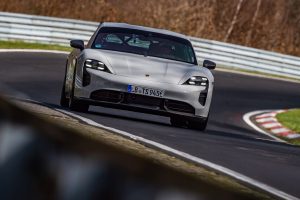A new simulation of The Boring Company’s Las Vegas Convention Center Loop has revealed that the tunnel system has the potential to move over 20,000 people per hour. That is, at least, if the company employs its planned high-capacity AEV people-mover, which is expected to be built on the Model X and have a seating capacity of 16 passengers.
Tunneling enthusiast Phil Harrison utilized the same PTV VISSIM software he used when he ran a previous simulation to see how far a Model 3-powered Las Vegas Convention Center Loop could go if each station was limited to 100 people. Harrison included a disclaimer for his recent simulation, partly in light of comments from Boring Company skeptics, some of whom pointed out the lack of accessibility options in the Loop system, as well as the fact that the VISSIM software featured some clipping of vehicles through objects.
Following is Harrison’s disclaimer covering the parameters of his simulation:
The intent is to show what is theoretically possible to help understand the limits of the Loop system. The LVCC Loop is the first part of a Vegas-we individualized Express Mass Transit system that will allow for high-speed non-stop point-to-point travel with capacity that scales with the number of stations.
Many nuanced aspects are not able to be simulated and therefore have been approximated.
- Unfortunately, I am not able to model accessibility options (there is no reason to doubt that the real LVCC Loop will be adhering to accessibility standards)
- The Model X vehicle is a placeholder for a rumored 16-seater AEV people-mover.
- Alightment on both sides of vehicles assumed as per station but not simulated.
- Dwell times are randomized but average 40 seconds.
- Station layout and track alignment are as per official Clark County plans.
- Actual layout of stations may differ materially from what is shown.
- Clipping of vehicles through objects is a byproduct of a simple conflict resolution algorithm. Real-life autonomous vehicles can navigate shared spaces safety at the same average speed as simulated.
Harrison shared two simulations of the LVCC Loop with its initially-planned AEV people-movers. The first simulation, which depicted the system with only pedestrian signals and no escalators, resulted in the Loop accommodating 18,650 commuters per hour. This is if the 16-passenger pods are only filled by 12 people, and if the speed of the vehicles is limited to just about 60 mph.
Once escalators are used in the LVCC Loop stations, and the pods are allowed to travel about 75 mph, the simulation was able to move an impressive 21,600 people per hour through the Boring Company’s tunnels. That’s a number already approaching mass transit levels, and not bad at all for a system that was built for just over $50 million. After all, the other company shortlisted for the Las Vegas Convention Center project, Doppelmayr, proposed an above-ground transit system that was estimated to cost $215 million.
Watch the new simulation of The Boring Company’s LVCC Loop in the video below.
Original Publication by Maria Merano at Teslarati.
Want to buy a Tesla Model 3, Model Y, Model S, or Model X? Feel free to use my referral code to get some free Supercharging miles with your purchase: http://ts.la/guanyu3423
You can also get a $100 discount on Tesla Solar with that code.





